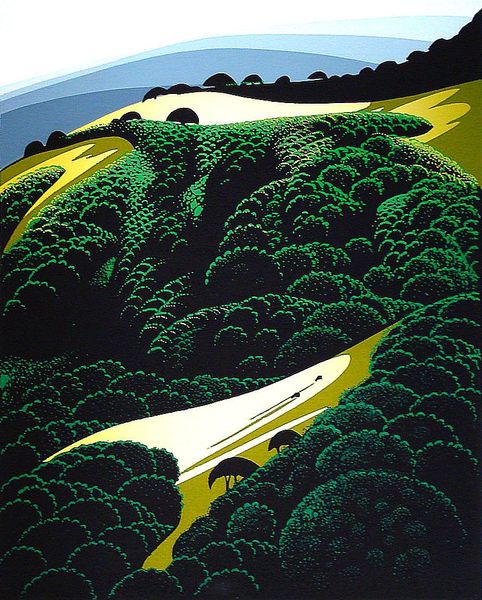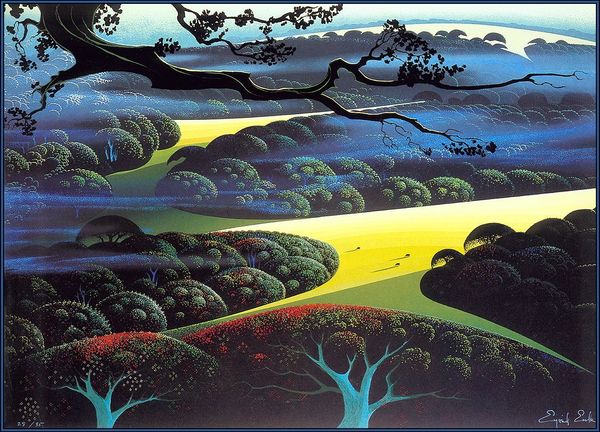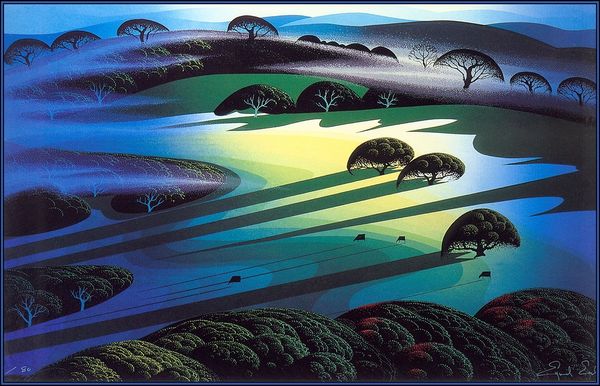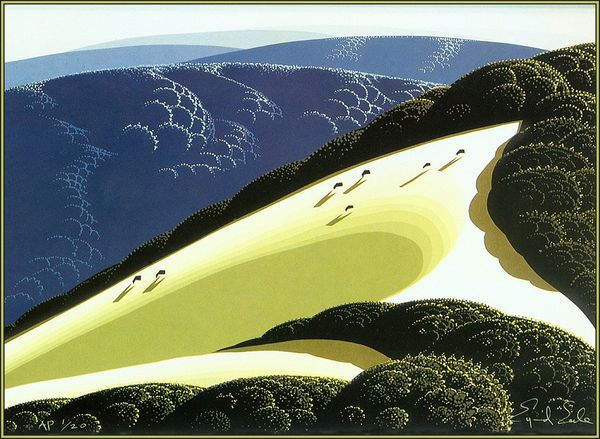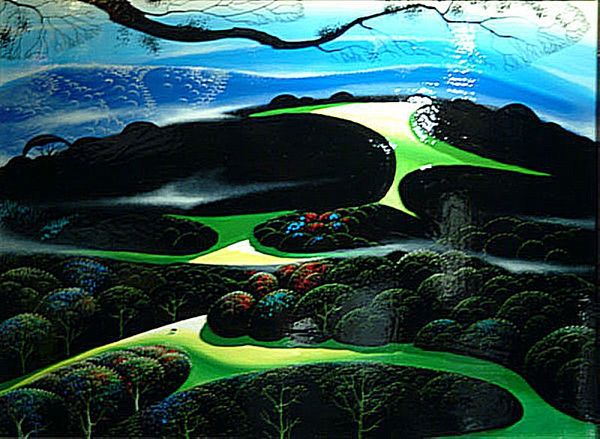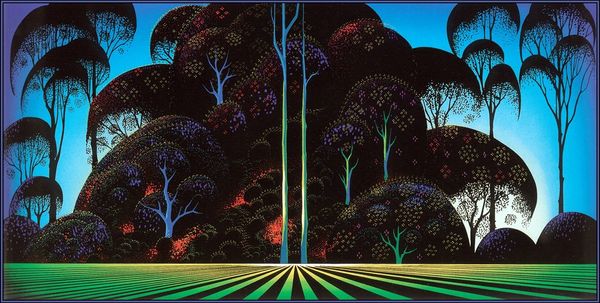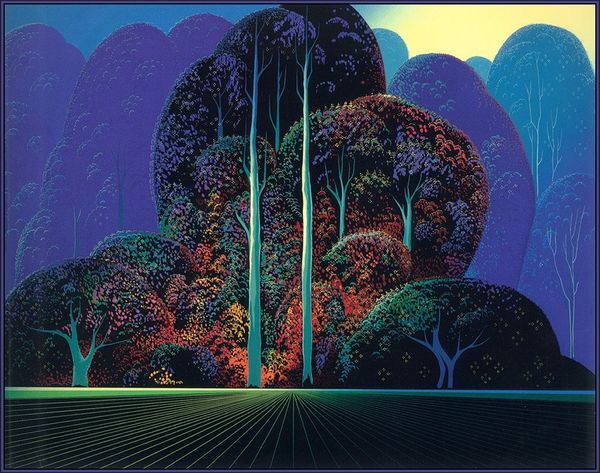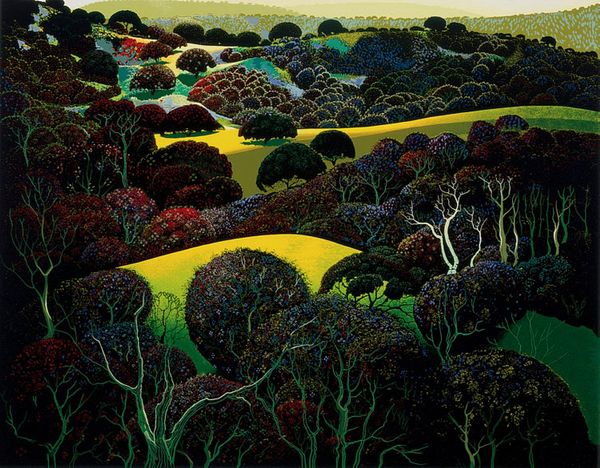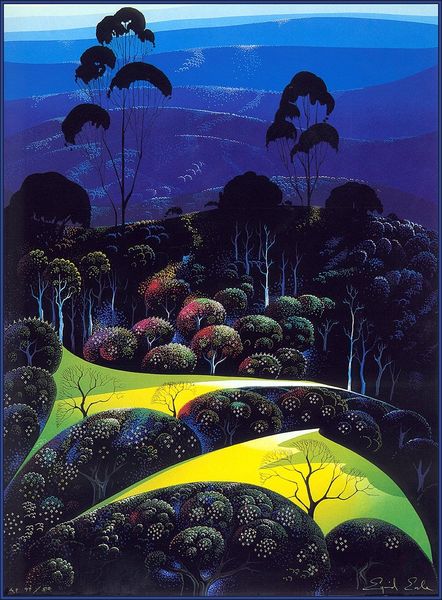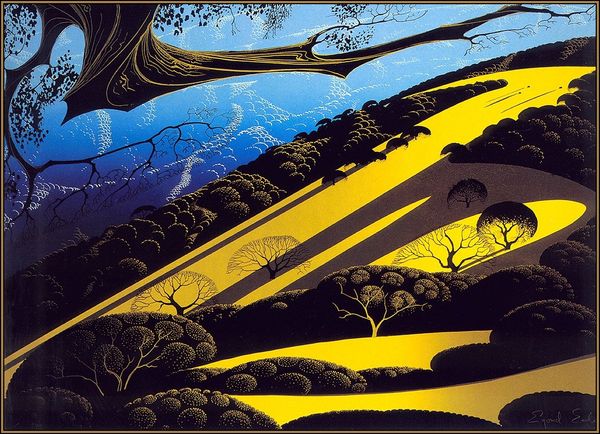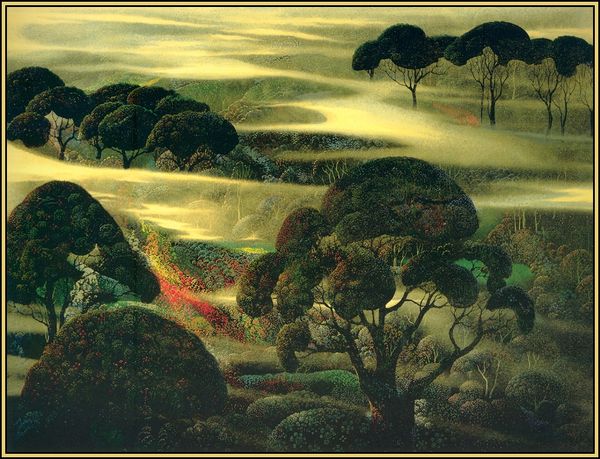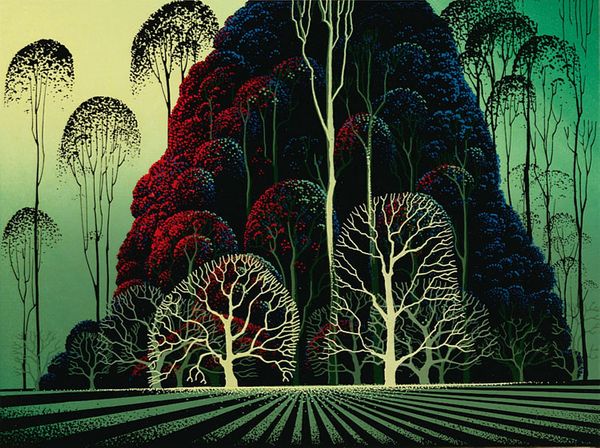
painting
#
tree
#
sky
#
painting
#
landscape
#
form
#
rock
#
forest
#
geometric
#
plant
#
line
#
nature
Copyright: Eyvind Earle,Fair Use
Editor: Here we have Eyvind Earle's "Arroyos," a painting featuring a stylized landscape. The heavy lines and strong contrasts create this very graphic, almost surreal environment. What strikes you most about this piece? Curator: I see a tension between representation and abstraction. Earle uses recognizable elements—trees, hills, sky—but renders them in a way that borders on symbolic rather than realistic. It reminds me of debates around land use, how we visually consume and ultimately control the natural world through imposed aesthetics. The geometric forms seem to flatten the landscape into an almost colonial map. Editor: A colonial map? That's an interesting angle. How so? Curator: Well, consider the flattening, the way the land becomes an object viewed from above, neatly divided. Doesn't that mirror how colonial powers surveyed and controlled territories, turning them into resources? Even the 'pristine' nature here can be read as a blank canvas awaiting imposition. What about the limited palette – does that speak to any societal power dynamics to you? Editor: The contrast between the dark foreground and the bright yellow-green does feel almost oppressive, like a shadowed, suppressed space leading to an idealized, almost artificial, future. I never would have considered it that way initially. Curator: Exactly. This resonates with me—consider that the painting also embodies dialogues around environmentalism, echoing the legacy of exploitation and idealized images of "untouched" nature. It allows us to consider how landscapes are gendered, raced, and politicized spaces. Editor: I am leaving this conversation having thought about the work much differently. I had only noticed the aesthetic qualities of the piece and failed to fully grasp its social, political, and environmental implications. Curator: Precisely, and understanding that socio-political framing empowers us to connect more meaningfully with the piece. Art becomes a tool for critical inquiry rather than just passive appreciation.
Comments
No comments
Be the first to comment and join the conversation on the ultimate creative platform.
